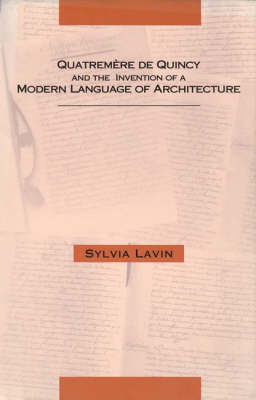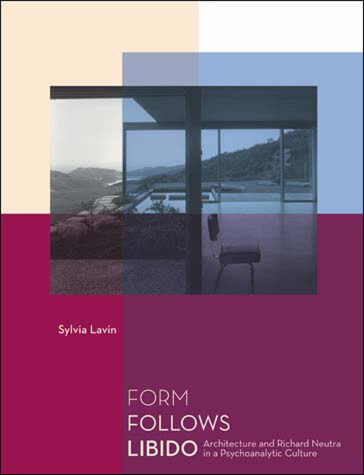The MIT Press
2 total works
Quatremere De Quincy and the Invention of a Modern Language of Architecture
by Sylvia Lavin
Challenging the usual appraisal of Quatremere as a conservative academic, Lavin argues that his underlying emphasis on the social contract of architecture, rather than the neoclassical style he explicitly promulgated, is the key to the persistent interest in his writings. She shows how Quatremere's effort to establish a universally valid theory of architecture led him beyond the boundaries of academic classicism and into contemporary developments in language theory, ethnography, and Egyptology.Lavin then demonstrates how the relativism of these emerging spheres of knowledge, which sought to discover fundamental relationships between distinct cultural traditions, affected Quatremere's understanding of architecture. She posits Quatremere as the first thinker to develop a theory of architecture able to accommodate a wide range of formal expressions and generate dissimilar discourses. In the process, she reveals a consonance between the interdisciplinary nature of his thought and the extraordinary breadth of his influence.Sylvia Lavin is Assistant Professor of Architectural History and Theory in the Graduate School of Architecture and Urban Planning at the University of California at Los Angeles.
How modern architecture came to embrace the urges and fears of the affective unconscious.
"Eight million Americans a year cool their heels in psychiatric waiting rooms. Design can help lower this nervous overhead."-Richard Neutra, 1954
Sylvia Lavin's Form Follows Libido argues that by the 1950s, some architects felt an urge to steer the cool abstraction of high modernism away from a neutral formalism toward the production of more erotic, affective environments. Lavin turns to the architecture of Richard Neutra (1892-1970) to explore the genesis of these new mood-inducing environments. In a series of engaging essays weaving through the designs and writings of this Vienna-born, California-based architect, Lavin discovers in Neutra a sustained and poignant psychoanalytic reflection set in the context of a burgeoning psychoanalytic culture in America.
Lavin shows that Neutra's redirection of modernism constituted not a lyrical regression to sentimentality but a deliberate advance of architectural theory and technique to engage the unconscious mind, fueled by the ideas of psychoanalysis that were being rapidly disseminated at the time. In Neutra's responses to a vivid range of issues, from psychoanalysis proper to the popular psychology of tele-evangelical prayer, Lavin uncovers a radical reconstitution of the architectural discipline.
Arguing persuasively that the received historical views of both psychoanalysis and architecture have led to a suppression of their compelling coincidences and unorthodoxies, Lavin sets out to unleash midcentury architecture's hidden libido. Neither Neutra nor psychoanalysis emerges unscathed from her investigation of how architecture came to be saturated by the intrigues of affect, often against its will. If Reyner Banham sought to put architecture "on the couch," then Lavin, through Neutra, leaps beyond Banham's ameliorative aim to lure contemporary architecture into the lush and dangerous liaisons of environmental design.

